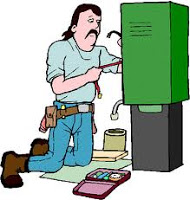Apr 2013
Why Get Involved With The Lighting Decisions – Part 1

So you are building a new house or remodeling the one you live in now and you hire a contractor who works with subs, one of whom is an electrician. You meet with the electrician and he says: “I’ve wired hundreds of houses. I’ll walk through with you and tell you where I think you should have lights.” Wow! This guy must be good. He’s wired hundreds of houses.
Maybe he’s good and maybe he isn’t. Remember he is going to be wiring your house, a really big investment, and a really important component. And he is not going to be cooking in your kitchen or washing your dishes, or putting on your makeup or entertaining your friends. In fact, he is going to do the quickest job he can possibly do and then go on to the next job because that is how he makes his living. He probably quoted the contractor a fixed price based on what he has done in those hundreds of previous jobs, and anything out of the ordinary he resents doing because of his contract. I am not saying the electrician is intentionally doing a bad job. He is probably doing what he always does because that is in his comfort zone. The problem is that the way he has always done things might not be optimal.
You should really care about the lighting because you will be living with it for years, recessed lighting in particular because if it is installed improperly it is really expensive to change later. You should educate yourself in proper lighting design or hire a lighting designer/consultant (like me) before the wiring in your house is “roughed in.” Actually you should really do this before construction begins. I don’t care if you are building a mansion or a really modest home. You really should “drive the bus” when it comes to lighting decisions. I don’t care where you buy the lighting (I really do, but that’s another story) just take charge. It’s your money.
Fogg Lighting is an American Lighting Association member. We pride ourselves on continuing our lighting education. We work hard to stay current with what is going on in the industry. And we are good at lighting design. Visit us at FoggLighting.com and please contact us with any of your lighting questions.

